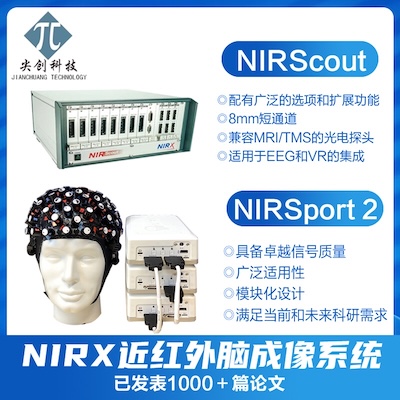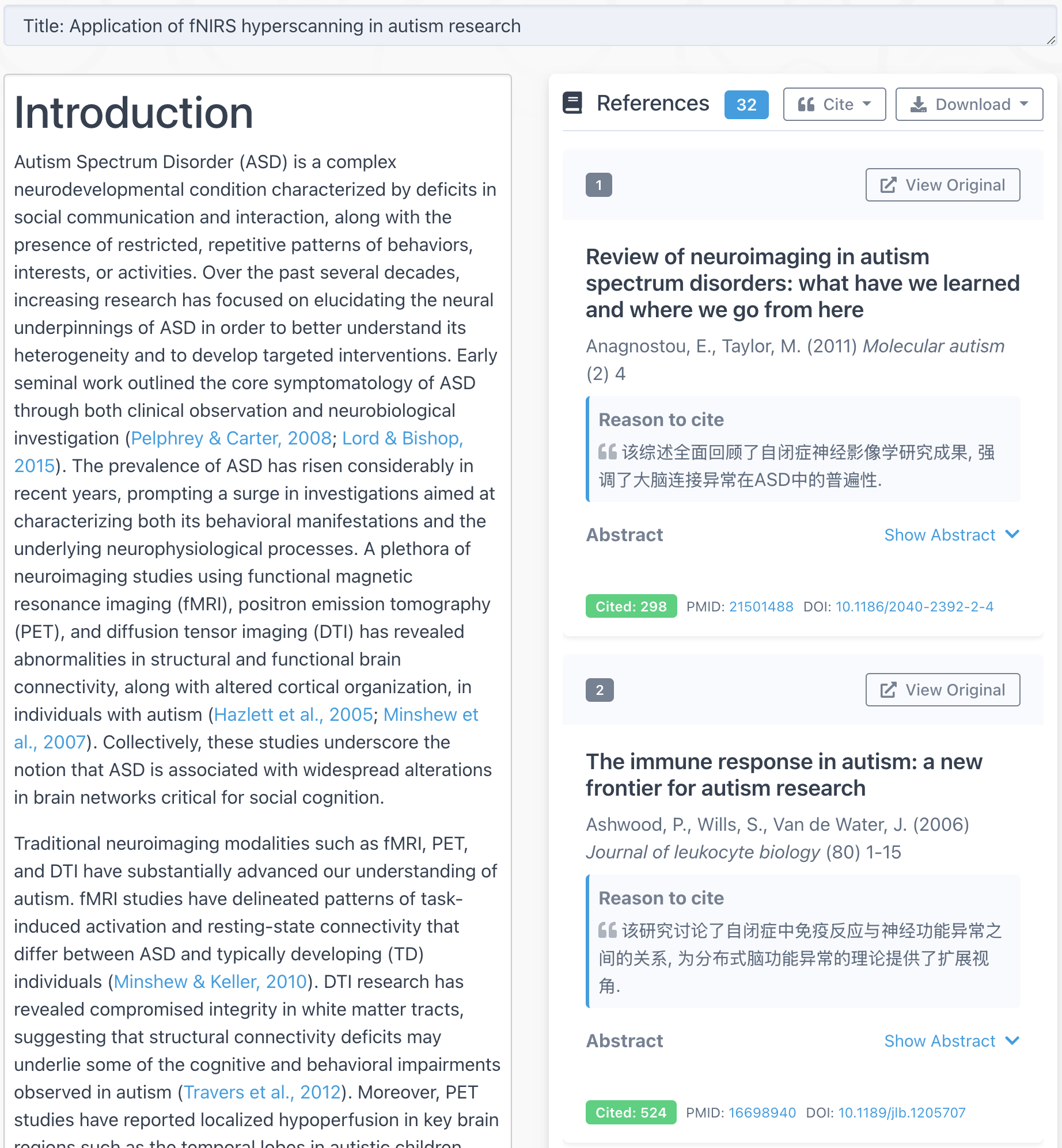Subscription Link: https://www.storkapp.me/readingguide/
If you are interested in the fNIRS (Functional Near-Infrared Spectroscopy) field, Stork is now offering a free service: every week, we will collect and summarize the fNIRS-related literature published in the past week, and then send you a briefing every Sunday afternoon, US west time. This service allows you to:
- No more manual searching: Save significant time by eliminating the need to spend energy manually retrieving the latest fNIRS papers from various databases each week.
- Fully grasp frontier dynamics: Be the first to learn about the newest research findings, technological advancements, and application explorations in the global fNIRS field.
- Don’t miss any major breakthroughs: Ensure you don’t overlook important work published by peers in your specific sub-field or related interdisciplinary areas.
- Organized summary and integration: The weekly report is not just a simple list of papers, but instead, the content is organically summarized and systematically integrated according to research themes (for example, grouping studies with the same topic or similar methods together), helping you grasp the whole picture of the field more efficiently.
- Flexible language selection: You can choose to receive the weekly briefing in either an English or Chinese version, according to your preference.
In short, this allows you to stay continuously updated on the fNIRS academic frontier in the most effortless and efficient way.

Below is a sample email:
Enhancing fNIRS Applications and Inclusivity
Functional near-infrared spectroscopy (fNIRS) is a promising neuroimaging tool, but its signal quality can be affected by individual biophysical traits. In a study published in Nature Human Behaviour, Boas and colleagues from Boston University quantified how hair properties, skin pigmentation, and head size impact fNIRS signals, providing recommendations to improve inclusivity in research. To further enhance data quality, a study in Neurophotonics by Yücel demonstrated that high-density fNIRS arrays offer superior localization and sensitivity compared to standard sparse arrays, especially for tasks with lower cognitive loads. Another study in Neurophotonics by Pollonini from the University of Houston outlined a holistic and inclusive approach for recruiting and retaining women of color in fNIRS studies, successfully achieving a 100% retention rate.
Clinical Applications of fNIRS in Neurology and Rehabilitation
fNIRS is proving to be a valuable tool for diagnosing and understanding neurological conditions. Research in Stroke by Gao and his team at West China Hospital, Sichuan University, showed that fNIRS can identify biomarkers in the frontal cortex to stratify the severity of post-stroke cognitive impairment. In a related field, a study in the European Journal of Nuclear Med Molecular Imaging by Higuchi developed a simplified, noninvasive PET imaging method to quantify astrocyte reactivation in Alzheimer’s disease, revealing that it peaks during the mild cognitive impairment stage. A systematic review in Frontiers in Neurology by Gong concluded that fNIRS is effective in identifying early dementia-related changes by detecting altered brain activation patterns in patients with mild cognitive impairment and Alzheimer’s disease. Furthermore, a study in Neurophotonics by Weder from the University of Bern used fNIRS to reveal significant differences in cortical activation between good and poor performers among cochlear implant users, highlighting the role of neural mechanisms in rehabilitation success.
fNIRS in Cognitive and Social Neuroscience
fNIRS is also shedding light on the neural basis of human cognition and social interaction. A study in Accident Analysis & Prevention by Wang from Southwestern University of Finance and Economics used fNIRS to find that different external factors during building evacuations, such as the presence of other people or obstacles, activate distinct regions of the prefrontal cortex. In the Annals of the New York Academy of Sciences, Shamay-Tsoory from the University of Haifa discovered that higher interbrain synchrony in the dorsolateral prefrontal cortex can mitigate the tendency for individuals to adopt more extreme views within echo chambers. Another study in the same journal by Thompson from Macquarie University found that synchronizing movements to music during exercise enhances enjoyment and may support executive function by increasing external focus. Research in NeuroImage by Wang from East China Normal University demonstrated that positive emotional contagion is associated with higher interpersonal brain synchronization in brain networks related to mirroring and cognitive control.
Motor Control and Learning with fNIRS
The neural mechanisms of motor control are another key area of fNIRS research. A study in IEEE Transactions on Neural Systems and Rehabilitation Engineering by Gao found that a medium level of visual feedback gain optimizes motor performance during a grip strength task by enabling efficient neural resource allocation. In NeuroImage, Wu from The Fourth Military Medical University provided evidence that motor imitation is an optimal strategy for motor learning, with fNIRS results showing that the primary somatosensory cortex is a key neural substrate. Research in Frontiers in Physiology by Chuhuai from The First Affiliated Hospital of Sun Yat-sen University showed that low-intensity aerobic exercise is more effective than moderate-intensity exercise at enhancing executive function, which is associated with optimized functional connectivity in the parietal cortex.
Early Brain Development and Language
fNIRS is uniquely suited for studying brain development in infants and children. A study in iScience by Moghimi provided evidence that premature newborns encode auditory rhythms using cortical networks that extend beyond auditory areas into motor regions, suggesting an early-developing auditory-motor network. In Neurophotonics, Sheng from The Hong Kong Polytechnic University used fNIRS to show that functional specialization for language processing in the left inferior frontal gyrus is present in toddlers aged 2-4, supporting models of early language-specific neural regions.


